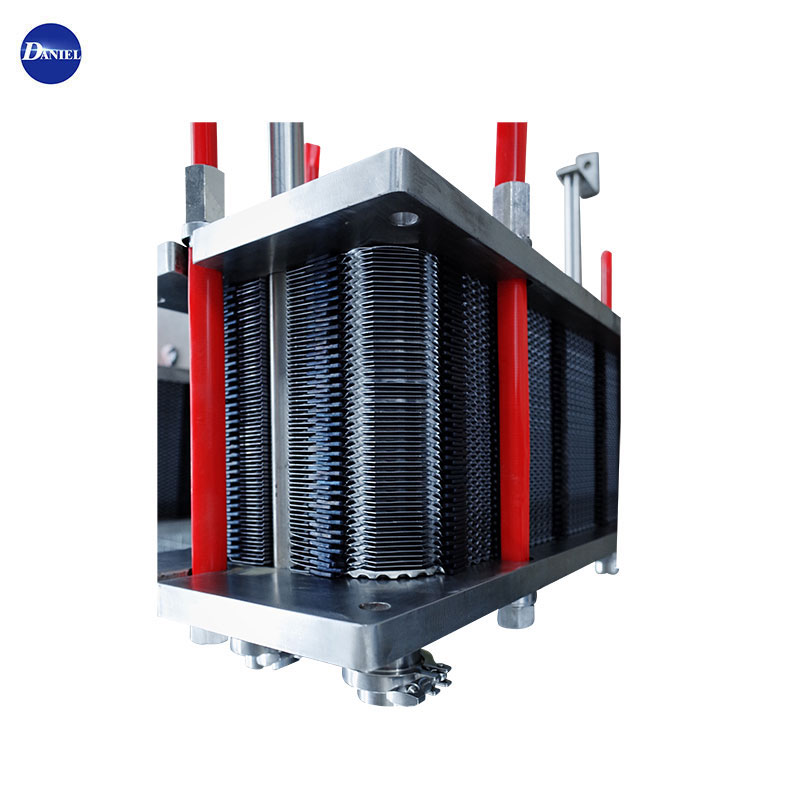
 English
English  Español
Español Português
Português русский
русский Français
Français 日本語
日本語 Deutsch
Deutsch tiếng Việt
tiếng Việt Italiano
Italiano Nederlands
Nederlands ภาษาไทย
ภาษาไทย Polski
Polski 한국어
한국어 Svenska
Svenska magyar
magyar Malay
Malay বাংলা ভাষার
বাংলা ভাষার Dansk
Dansk Suomi
Suomi हिन्दी
हिन्दी Pilipino
Pilipino Türkçe
Türkçe Gaeilge
Gaeilge العربية
العربية Indonesia
Indonesia Norsk
Norsk تمل
تمل český
český ελληνικά
ελληνικά український
український Javanese
Javanese فارسی
فارسی தமிழ்
தமிழ் తెలుగు
తెలుగు नेपाली
नेपाली Burmese
Burmese български
български ລາວ
ລາວ Latine
Latine Қазақша
Қазақша Euskal
Euskal Azərbaycan
Azərbaycan Slovenský jazyk
Slovenský jazyk Македонски
Македонски Lietuvos
Lietuvos Eesti Keel
Eesti Keel Română
Română Slovenski
Slovenski मराठी
मराठी Srpski језик
Srpski језик
Maintenance of Plate Heat Exchanger
2021-11-15
Maintenance of plate heat exchanger
Plate heat exchanger is an important part of heat exchange technology in process industry equipment. The elastic gasket that seals between the various plate fins is a vulnerable part, and it is also a part that is prone to aging under natural conditions. Its service life has an important influence on the service life of the plate heat exchanger. If these seals are thermally hardened and lose their original elasticity, the heat exchanger may not work properly.
The following factors have an important influence on the service life of the elastic gasket: the working method of the heat exchanger (continuous or discontinuous), the corrosiveness of the heat dissipation medium and the cleaning agent used, the maximum working temperature, the maximum working pressure, and the Large pressure and unbalanced pressure make the stress of the elastic gasket larger and it will naturally age.
The softening of the elastic gasket is related to pressure and temperature. When the gasket loses its elasticity, the heat exchanger will leak. In some products, in order to solve the dripping phenomenon caused by the aging of the sealing gasket, it is allowed to adjust the sealing performance of the heat exchanger, that is, tighten the bolts of the combined plate heat exchanger again to adjust the elastic sealing gasket between each heat exchanger The pressing force can solve the dripping problem. Generally, the maximum and minimum allowable stress are given on the nameplate of the heat exchanger with this function. For new heat exchanger fins, the smallest allowable stress should be used for connection and fixation. Depending on the number of heat exchanger plates in each group, the tightening force of the heat exchanger can be adjusted one or more times. Each time the nut is tightened, the nut can be screwed into 3mm, and always pay attention to the stress of the adjusting plate during the tightening process, and , It is only allowed to adjust the tightening force of the heat exchanger without working pressure at room temperature to prevent dripping.

Plate heat exchanger is an important part of heat exchange technology in process industry equipment. The elastic gasket that seals between the various plate fins is a vulnerable part, and it is also a part that is prone to aging under natural conditions. Its service life has an important influence on the service life of the plate heat exchanger. If these seals are thermally hardened and lose their original elasticity, the heat exchanger may not work properly.
The following factors have an important influence on the service life of the elastic gasket: the working method of the heat exchanger (continuous or discontinuous), the corrosiveness of the heat dissipation medium and the cleaning agent used, the maximum working temperature, the maximum working pressure, and the Large pressure and unbalanced pressure make the stress of the elastic gasket larger and it will naturally age.
The softening of the elastic gasket is related to pressure and temperature. When the gasket loses its elasticity, the heat exchanger will leak. In some products, in order to solve the dripping phenomenon caused by the aging of the sealing gasket, it is allowed to adjust the sealing performance of the heat exchanger, that is, tighten the bolts of the combined plate heat exchanger again to adjust the elastic sealing gasket between each heat exchanger The pressing force can solve the dripping problem. Generally, the maximum and minimum allowable stress are given on the nameplate of the heat exchanger with this function. For new heat exchanger fins, the smallest allowable stress should be used for connection and fixation. Depending on the number of heat exchanger plates in each group, the tightening force of the heat exchanger can be adjusted one or more times. Each time the nut is tightened, the nut can be screwed into 3mm, and always pay attention to the stress of the adjusting plate during the tightening process, and , It is only allowed to adjust the tightening force of the heat exchanger without working pressure at room temperature to prevent dripping.

X
We use cookies to offer you a better browsing experience, analyze site traffic and personalize content. By using this site, you agree to our use of cookies.
Privacy Policy





